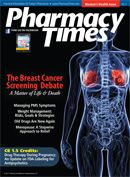Publication
Article
Pharmacy Times
Hemostasis and Thrombosis Issues
Author(s):
Atrial Fibrillation and Stroke: Risk and Treatment
An estimated 15% of all strokes in the United States are due to atrial fibrillation (AF), and the proportion increases markedly with age.
AF is the most common chronic cardiac arrhythmia, with an estimated 2.7 million Americans with the condition in 2010. The prevalence of AF is expected to increase to 12.1 million by 2050. AF is an independent risk factor for stroke, increasing stroke risk approximately 5-fold. Ischemic strokes in AF typically occur unpredicted by prior transient ischemic attacks (TIAs) in onethird of AF patients with stroke. Cardiogenic emboli in AF are usually larger than arterial-source emboli in atherosclerosis and tend to lodge in more proximal cervicocerebral arterial segments. Consequently, brain infarcts in patients with AF typically are larger than those in non-AF stroke patients, producing more severe acute neurologic deficits, worse long-term functional outcomes, and higher mortality rates.
The cost of medical care in the United States is about $8700 per year higher for a patient with AF compared with an individual without AF. Treating AF is complex, and includes rate and rhythm control along with antithrombotic therapy to prevent thromboembolism. Warfarin and aspirin are options for managing stroke risk.
Although warfarin prevents 64% of strokes, it has numerous limitations, including slow onset and offset of action, a narrow therapeutic window, and a metabolism that is affected by diet, drugs, and genetic polymorphisms. Because of its unpredictable dose response, warfarin requires careful coagulation monitoring to ensure that a therapeutic anticoagulant effect is achieved and maintained. Aspirin is easier to use but less effective than warfarin. An oral direct thrombin inhibitor, dabigatran, is approved to reduce the stroke risk. Newer factor Xa inhibitors are being studied (eg, rivaroxaban, apixaban) that hold promise in providing effective anticoagulant control.
Increased VTE Risk with Third-Generation Oral Contraceptives
New studies published in BMJ in 2011show that women in the United States without venous thromboembolism (VTE) risk factors taking third-generation oral contraceptives containing the progesterone drospirenone have an increased risk for nonfatal VTE compared with women taking older secondgeneration contraceptives containing the progesterone levonorgestrel.
A UK study reported incidence rates for idiopathic VTE were 23 per 100,000 woman-years with drospirenone and 9.1 per 100,000 woman-years with levonorgestrel. Corresponding incidence rates in a US study, published online April 21, 2011, in BMJ, were 30.8 per 100,000 woman-years with drospirenone and 12.5 per 100,000 woman-years with levonorgestrel.
Although the absolute risk of nonfatal VTE is low, these and older studies raise some concerns for women taking third-generation oral contraceptives.
Fatty Acids in Blood Interfere with Platelet Inhibition By Aspirin
A study presented on April 30, 2011, at the American Heart Association, Thrombosis and Vascular Biology 2011 Scientific Sessions in Chicago, Illinois, reported that the interaction of aspirin and cyclooxygenase-1 enzyme can be inhibited by dipyrone and some other nonsteroidal anti-inflammatory drugs. This allows platelets to remain active despite the presence of aspirin.
Researchers noted that aspirin alone initially completely abolished platelet aggregation activity, but oleic acid and palmitic acid allowed platelet activity to recover in a dose-dependent way. Normal concentrations of these fatty acids found in plasma were associated with about a 20% recovery of normal platelet function.
Decanoic acid can completely prevent the effect of aspirin, allowing 100% recovery of platelet function. Oleic acid, a monounsaturated omega-9 fatty acid and palmitic acid, is a common saturated fatty acid found in various animal and plant sources.
Patients more likely to have high levels of these fatty acids include those with uncontrolled diabetes, obesity, and severe dyslipidemia. The omega-3 and 6 fatty acids did not appear to interfere with aspirin’s antiplatelet activity. PT
Mr. Brown is professor emeritus of clinical pharmacy and a clinical pharmacist at Purdue University College of Pharmacy, Nursing, and Health Sciences, Department of Pharmacy Practice, West Lafayette, Indiana. This column’s information is based on current studies and references, but it may be changed without notice with newer studies or with different patient populations.







